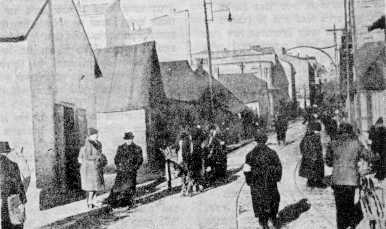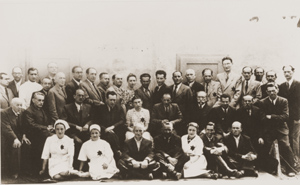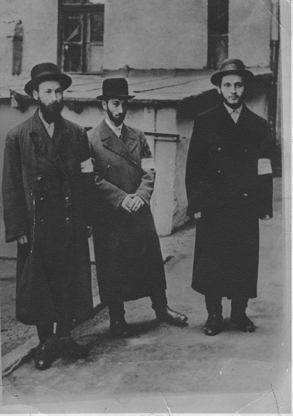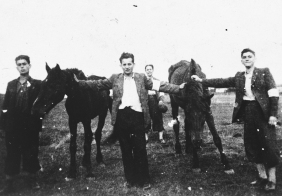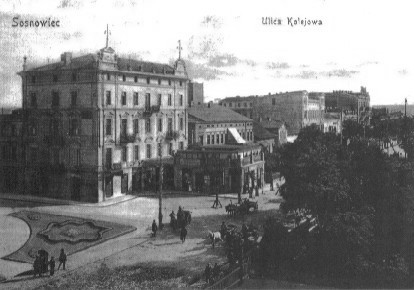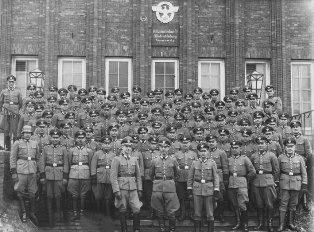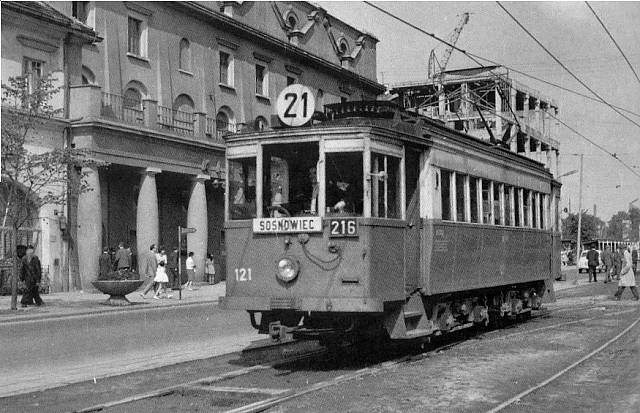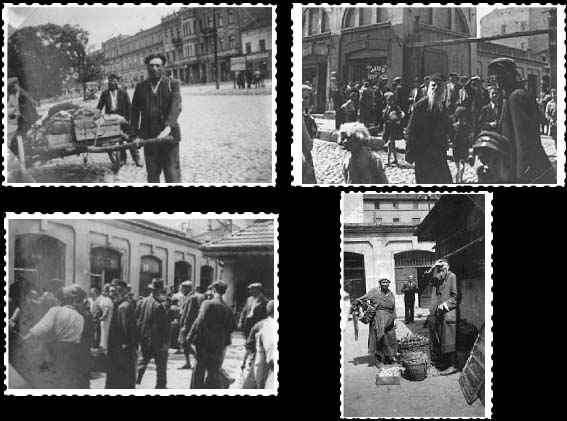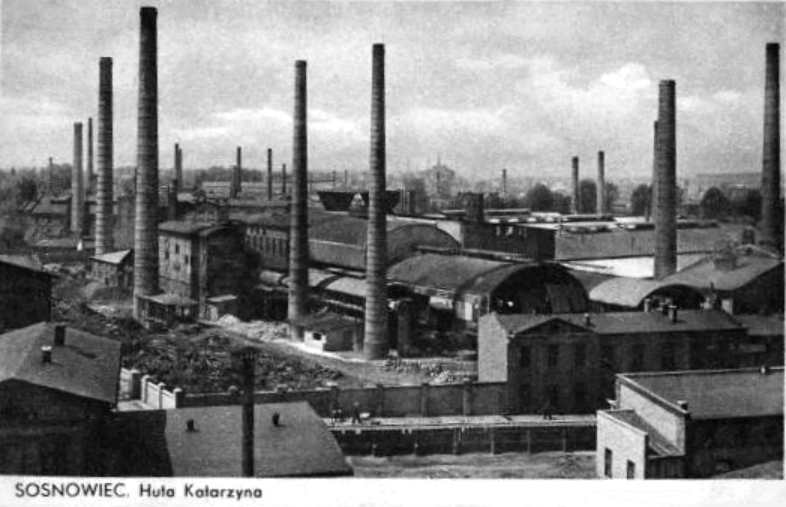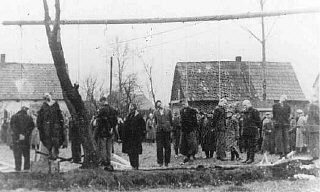Holocaust Education & Archive Research Team |
|
Occupation German Occupation of Europe Timeline
-
[The Occupied Nations]
Poland Austria Belgium Bulgaria Denmark France Germany Greece Hungary Italy Luxembourg The Netherlands Norway Romania Slovakia Soviet Union Sudetenland | ||||||
The Extermination of the JewsOf Sosnowiec, Bendzin and Vicinity
2nd June 1945
The First Persecutions
At the time of the occupation of Upper Silesia by the German Army in September 1939, approximately 80,000 Jews were living in the Sosnowiec and Bendzin District.
Immediately after the entry of the German Army into Bendzin the local synagogue and a nearby block of 15 houses where Jews dwelled were set on fire and more than 100 Jews perished in the flames. Those trying to escape from the burning houses were shot on the spot.
These proceedings were carried out by Jensen and Imhoff, armed Germans who arrived at Bendzin in civilian clothes several days before the entry of the German Army, and by local inhabitants incited by them. Also in Sosnowiec the synagogue was burned.
The first months of the occupation passed comparatively quiet. All Jews were ordered to wear a special badge with the Shield of David. Jewish factories, workshops and shops were requisitioned and administered by a newly formed trustee institution “Treuhandstelle Ost –Oberschlesien” which was headed by Dr. Braune.
Judenrat, Forced Labour
In Bendzin and Sosnowiec the German Authorities appointed Jewish Councils (Judenrat) which were responsible for the strict execution of the German orders.
A German Labour Office was opened and all Jews between the ages of 14 -60 were recruited for forced labour. They were employed at the construction of river bridges near Bendzin and at the building of roads. Working conditions were difficult and the labourers were often maltreated.
At the beginning of 1940 the transfer of Jewish labourers to labour camps in Silesia commenced. This transfer was organised by a special German department commanded by SS- Obergruppenfuhrer Schmelt (“Sonderbeauftragter des Reichsfuhrers fuer Fremdvoelkischen Arbeitseinsatz”).
His deputy was SS- Sturmbannfuhrer Lindner, this organisation which was a branch of the SS co-operated with the Gestapo in the extermination of Jews in Silesia. Its staff supervised the SS labour camps for Jews in Upper Silesia, including the camps at Oswiecim and Brezinka.
The “Sonderbeauftragter” owned workshops where Jewish labourers were employed. In cases where private German firms employed Jewish labourers, they had to remit to the “Sonderbeauftragter” 40% of their profit.
In Bendzin and Sosnowiec Jewish workshops were established comprising shoe and textile manufacture and many other branches. The Jewish labourers were this way safe from being deported to forced labour camps.
Resettlement and Small Scale Actions
On the 20 March 1940 6,000 Jews were deported from Oswiecim, Bendzin and Sosnowiec. In spring 1940 big camps were set up in Oswiecim and vicinity and a number of factories installed there. The local population was forced to evacuate several villages.
In summer 1940 the notorious extermination camp was erected at Oswiecim and the first test burning of human corpses in the crematoria were made.
Jews from Bendzin and Sosnowiec who had committed any offence were sent to the extermination camp in Oswiecim. The first arrived there in August 1940. The relatives of such deportees would usually be informed some weeks later of their death.
At the beginning of 1941 the Jews of Sosnowiec were ordered to move to Szrodula, a suburb of Sosnowiec. In Sosnowiec, a transit camp (Dulag) was established from where all Jews without permanent work were despatched to the various forced labour camps. The Jews of the smaller villages in the district had to leave their homes and move to Bendzin and Sosnowiec.
In March 1942 the German Authorities started to deport larger groups of Jews from Bendzin and Sosnowiec to the Oswiecim extermination camp. In April groups of 60-70 Jews were sent there weekly, mostly people who had contravened police orders, such as, curfew hours, not wearing the badge etc.
The Political Department of the Gestapo arrested Jews suspected of political activities and sent them to Oswiecim as well. The greater part of those arrests were carried out by Hauptscharfuhrer Angerer.
First Large Scale Deportation The first large scale deportations from Bendzin and Sosnowiec took place in May 1942. Dr Dreyer SS –Untersturmfuhrer, head of the Political Department of the Kattowitz Gestapo, demanded from the Jewish Councils to hand over for deportation 7,000 old and sick Jews promising that merely a resettlement was intended and that no harm would come to them.
After some discussion the original number was reduced to 1,500. On the day of the deportation SS troops and Schutzpolizei entered the Jewish quarters of Bendzin and Sosnowiec and collected the Jews earmarked for deportation.
Everybody was allowed to take 30kgs of baggage and small money. They were taken to the railway station and packed into cattle trucks, 120 per truck. The floors of the trucks were covered with a layer of lime and the trucks were sealed before departure. Many Jews suffocated on the way to Oswiecim.
The months June and July passed without large scale deportations, but every week small groups of Jews were deported to Oswiecim or to labour camps in Silesia.
Second Deportation
On the 12 August 1942 all the remaining Jews of Sosnowiec, Bendzin and Dabrowa were ordered to assemble at two places in Bendzin and Sosnowiec.
When they were all assembled, SS troops and Schutzpolizei armed with machine guns and hand grenades encircled the squares. The Schutzpolizei, which came from the police training schools at Macki and Szrodula, was commanded by von Woettke, Inspector of Police of the Sosnowiec District.
The deportation “action” was commanded by Dr. Dreyer, Lindner, Hauptscharfuhrer Freytag and three officials of the Sonderbeauftragter Roelle, Messner and Kuszinsky.
The Jews were compelled to pass in front of the deportation commission in family groups, they were divided into four categories:
(A) Those employed in factories essential to the German war effort, who were allowed to remain. (B) Those earmarked for transfer to forced labour camps in Germany. (C) Those destined for deportation to the extermination camp of Oswiecim. (D) Those whose fate had not been decided yet.
Those trying to pass from one group to another were killed on the spot. During the whole proceedings the Jews were maltreated by the SS and Schutzpolizei. The selection lasted until midnight, when all those belonging to category A were allowed to return to their homes. All others had to remain on the squares until the next morning when groups B and C totalling approximately 12,000 were concentrated in special buildings in the towns.
The same day the first transport of 2,000 left for the extermination camp of Oswiecim. For the following ten days the remainder was kept in the houses. Finally, approximately 6,000 Jews were deported to Oswiecim and 2,000 -3,000 belonging to category B to various forced labour camps in Germany. In February 1943 several thousand Jewish labourers were transferred to labour camps in Germany.
Establishment of Ghettoes
In March 1943, a ghetto for the Jews of Bendzin was established in Kamionka and one for the Jews of Sosnowiec in Szrodula. The Christian population was forced to leave the area of the ghetto.
The Jews of Dabrowa and the vicinity were brought to Sosnowiec and from there distributed to the two ghettoes, which harboured about 40,000 Jews. The gates of the ghetto were closed and guarded by German policemen.
Jews were only allowed to leave the ghetto only with special permission.
Jewish labourers working in factories outside the ghetto were escorted to their places of work. The discipline in the ghetto was very strict and any Jew who arose the dislike of a German might be deported to the Oswiecim extermination camp.
Third Deportation
On the 19 June 1943 Dr. Dreyer ordered the members of the Bendzin Judenrat to call at his office in Kattowitz. They never returned from there.
On 22 June 1943 all Jews from Bendzin were ordered to assemble. The non-workers, mostly old men, women and children, hid in bunkers, having learned from experience, so that mainly young people appeared for registration, believing that they would not be harmed, as they were working in the German war factories.
When they assembled, they were immediately surrounded by SS and Schutzpolizei. The “action” was commanded by the head of the Gestapo Kattowitz, SS- Sturmbannfuhrer Mildner, and Dr. Dreyer. Approximately 6,000 to 7,000 Jews were deported to Oswiecim. During the proceedings the ghetto was searched and those found hiding were shot on the spot. Altogether 175 Jews were killed during this action.
Several days later a similar “action” took place in Sosnowiec. Most of the Jews there succeeded in hiding themselves and thus only approximately 1,000 were deported.
The life in the ghettoes during the month of July 1943 was relatively quiet. The Jews no longer went to work, as they had learnt that their work did not offer any safeguard. The Jewish youth succeeded in organising an active underground movement and in obtaining arms.
Jewish sentries took up positions in the ghetto to warn inhabitants in case a new “action” should commence. The German Authorities published notices calling on all Jews fit for work to volunteer for forced labour in Germany, but only a few responded to the call.
Fourth Deportation
On Sunday 1 August 1943, the final extermination proceedings began in Bendzin and Sosnowiec. Never before had the Germans chosen Sunday for their “actions” and thus they surprised the Jews.
At 2a.m. the ghettoes were surrounded by SS and Schutzpolizei. The “action” was commanded by Hauptsturmfuhrer Peikart, commander of the Birkenau extermination camp. Almost all members of the Gestapo Sosnowiec and Bendzin and the Jewish Department of the Gestapo of Kattowitz headed by Dr. Dreyer participated.
The staff of the “Sonderbeauftragter” also attended. The “action” lasted for four days. The Jewish underground offered resistance but was overpowered after a short and valiant fight.
The Germans searched every house in the ghetto. During the proceedings more than 1,000 Jewish men, women and children were murdered in the ghetto.
The Germans did not bother to take Jews out of bunkers but fired into them with machine guns and finally tossed hand grenades in order to make sure that nobody should stay alive. Many children could be seen running about aimlessly in the ghettoes after they had lost their parents. They were caught by the Germans who put them into sacks and threw them into lorries or killed them on the spot by beating their heads against the pavement.
30,000 – 35,000 Jews were deported to the Oswiecim extermination camp. They were packed into railway cattle trucks, 120 -150 per truck. Many suffocated on the way. 150 Jews were permitted to remain in the town for collecting the property of the deported.
Final Extermination
On the 3 August 1943 a commission composed of Dr. Dreyer, Dr. Schenwaelder – mayor of Sosnowiec, Dr. Braune and Barcsr established a so-called liquidation camp in Sosnowiec. They announced that all Jews who had hidden during the last “action” might leave their hideouts and enter the camp where they would be permitted to remain.
Almost 2,000 Jews assembled. Several days later the same commission ordered the deportation to Oswiecim of several hundreds of them. Apart from the Jews in the camp about 300 Jews had remained in the ghettoes, who were employed at various tailoring workshops.
They also had to disinter the corpses of Jews killed during the “action” which were then loaded on to lorries and carried to the crematoria of Oswiecim.
Almost daily individual detainees were murdered by the guards especially by Lieutentants Richter and Teubel, Zugwachtmeister Dallenberg and Hauptwachtmeister Graupner
In September and October the Jews employed in the tailoring workshops were transferred to labour camps in Upper Silesia. From time to time, the Gestapo sent groups of Jews, from the liquidation camp to Oswiecim.
By December 1943, only 400 Jews had been left in Sosnowiec and about 150 in Bendzin.
Sources: Yad Vashem Archives NARA
Copyright H.E.A.R.T 2007
| ||||||
